Decoding the Tomato Paste Ingredients Label: Understanding the Key Components Introduction: The tomato paste ingredients label serves as a critical source of information that enables customers to make informed decisions about the products they consume. Understanding the various components listed on the label is essential, as it provides insight into the quality, nutritional value, and potential allergens of the tomato paste. In this article, we will delve into the common ingredients found in tomato paste, shed light on their purposes, and highlight any associated health considerations. 1. Tomatoes: The primary ingredient of tomato paste is, unsurprisingly, tomatoes. These are usually vine-ripened, high-quality tomatoes that have been picked at their peak ripeness. The tomatoes undergo a series of processing steps, including washing, peeling, deseeding, and straining, to produce a smooth, concentrated paste. It is worth noting that some brands may use organic or locally sourced tomatoes, which can be appealing to health-conscious consumers. 2. Salt: Salt is a common ingredient in tomato paste and serves as a flavor enhancer and preservative. It helps to balance the natural acidity of tomatoes while extending the shelf life of the product. However, individuals with high blood pressure or restricted sodium intake should be cautious and consider low-sodium or salt-free alternatives. 3. Citric Acid: Citric acid is a naturally occurring acid derived from citrus fruits. It is commonly added to tomato paste as a flavor enhancer and preservative. Citric acid can enhance the tanginess and overall taste of tomato paste, giving it a slightly acidic kick. It also acts as a natural preservative, inhibiting the growth of bacteria and increasing the product’s shelf life.
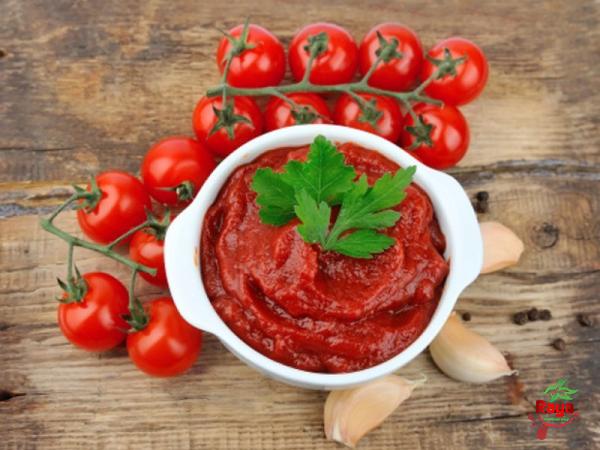
tomato paste
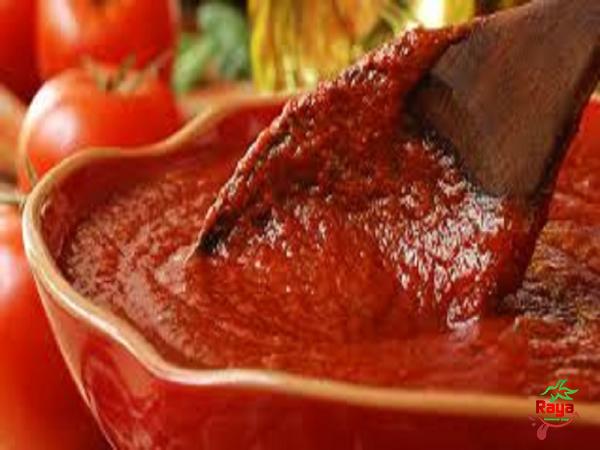 4. Added Sugar: Some brands may include added sugar in their tomato paste recipe. The purpose of adding sugar is to balance the natural acidity of tomatoes and give the paste a slightly sweeter flavor. It is important for consumers to be aware of their sugar intake, particularly those watching their calorie intake or managing conditions like diabetes. 5. Onion and Garlic: To enhance the taste and complexity of tomato paste, some brands may add onion and garlic powders or extracts. These ingredients contribute to the umami flavor and aroma of the paste. However, individuals with specific allergies or sensitivities to onions or garlic should carefully read the label to ensure that the product does not contain these ingredients. 6. Herbs and Spices: Herbs and spices are occasionally included in tomato paste formulations to add depth and complexity to the flavor profile. Common herbs and spices that may be found in tomato paste include oregano, basil, thyme, or parsley. These ingredients can elevate the taste experience but may also trigger allergies in some individuals. If you have allergies or sensitivities, it is crucial to scrutinize the label for potential allergens. 7. Thickening Agents: Certain tomato paste products contain thickening agents, such as modified food starch or concentrated tomato fiber. These additives improve the texture and consistency of the paste, making it easy to spread or incorporate into various recipes. While generally safe, individuals with dietary restrictions or sensitivities to specific additives should review the label carefully.
4. Added Sugar: Some brands may include added sugar in their tomato paste recipe. The purpose of adding sugar is to balance the natural acidity of tomatoes and give the paste a slightly sweeter flavor. It is important for consumers to be aware of their sugar intake, particularly those watching their calorie intake or managing conditions like diabetes. 5. Onion and Garlic: To enhance the taste and complexity of tomato paste, some brands may add onion and garlic powders or extracts. These ingredients contribute to the umami flavor and aroma of the paste. However, individuals with specific allergies or sensitivities to onions or garlic should carefully read the label to ensure that the product does not contain these ingredients. 6. Herbs and Spices: Herbs and spices are occasionally included in tomato paste formulations to add depth and complexity to the flavor profile. Common herbs and spices that may be found in tomato paste include oregano, basil, thyme, or parsley. These ingredients can elevate the taste experience but may also trigger allergies in some individuals. If you have allergies or sensitivities, it is crucial to scrutinize the label for potential allergens. 7. Thickening Agents: Certain tomato paste products contain thickening agents, such as modified food starch or concentrated tomato fiber. These additives improve the texture and consistency of the paste, making it easy to spread or incorporate into various recipes. While generally safe, individuals with dietary restrictions or sensitivities to specific additives should review the label carefully.
Specifications of tomato paste
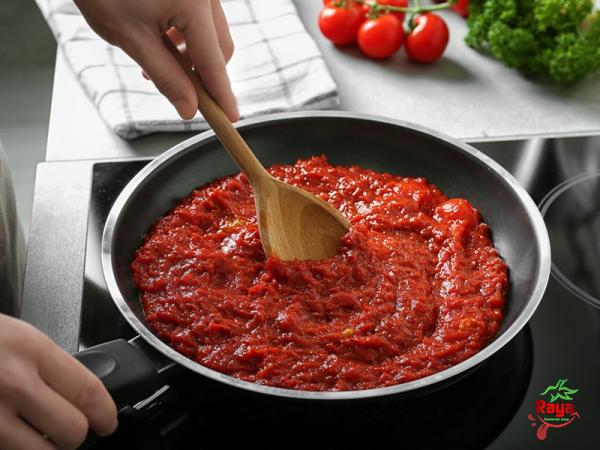 8. Variations and Specialty Tomato Pastes: In addition to the common ingredients listed above, some tomato paste products are specially formulated to cater to specific dietary preferences or restrictions. For instance, organic or gluten-free tomato paste options are available for those with particular dietary needs. These specialty products often use alternative ingredients or production methods to meet the specific requirements of certain consumer groups. Consequently, individuals with allergies or dietary restrictions should examine the label for potential allergens or prohibited additives. Conclusion: Understanding the tomato paste ingredients label is essential for making informed decisions about the products we consume. Whether it’s considering the source of tomatoes, evaluating the inclusion of salt or sugar, or checking for potential allergens, being knowledgeable about the ingredients allows us to choose tomato paste that aligns with our dietary preferences and health requirements. By deciphering and interpreting the label, consumers can make more informed and confident choices when selecting tomato paste for their culinary endeavors.Decoding the Tomato Paste Ingredients Label: Understanding the Key Components Introduction: The tomato paste ingredients label serves as a critical source of information that enables customers to make informed decisions about the products they consume. Understanding the various components listed on the label is essential, as it provides insight into the quality, nutritional value, and potential allergens of the tomato paste. In this article, we will delve into the common ingredients found in tomato paste, shed light on their purposes, and highlight any associated health considerations. 1. Tomatoes – The Heart of Tomato Paste: Tomatoes are the primary ingredient in tomato paste. The quality of the tomatoes used in the paste is crucial in determining its overall flavor and nutritional profile. Many brands use vine-ripened tomatoes that have been carefully selected and processed at their peak ripeness. This ensures a rich and authentic tomato taste in the paste. Some brands may even opt for organic or locally sourced tomatoes as an additional selling point for health-conscious consumers. 2. Salt – A Flavor Enhancer and Preservative: Salt is a commonly used ingredient in tomato paste due to its ability to enhance flavor and act as a preservative. It helps to balance the natural acidity of the tomatoes, making them more palatable. Additionally, salt contributes to extending the shelf life of the tomato paste by inhibiting the growth of bacteria and other microorganisms. However, individuals with high blood pressure or restricted sodium intake should consider low-sodium or salt-free alternatives to limit their sodium consumption. 3. Citric Acid – Enhancing Flavor and Preserving Freshness: Citric acid is a naturally occurring acid derived from citrus fruits. It is commonly added to tomato paste as a flavor enhancer and preservative. The addition of citric acid helps to enhance the tanginess and overall taste of the tomato paste, giving it a slightly acidic kick. Moreover, it acts as a natural preservative, preventing spoilage and prolonging the product’s shelf life.
8. Variations and Specialty Tomato Pastes: In addition to the common ingredients listed above, some tomato paste products are specially formulated to cater to specific dietary preferences or restrictions. For instance, organic or gluten-free tomato paste options are available for those with particular dietary needs. These specialty products often use alternative ingredients or production methods to meet the specific requirements of certain consumer groups. Consequently, individuals with allergies or dietary restrictions should examine the label for potential allergens or prohibited additives. Conclusion: Understanding the tomato paste ingredients label is essential for making informed decisions about the products we consume. Whether it’s considering the source of tomatoes, evaluating the inclusion of salt or sugar, or checking for potential allergens, being knowledgeable about the ingredients allows us to choose tomato paste that aligns with our dietary preferences and health requirements. By deciphering and interpreting the label, consumers can make more informed and confident choices when selecting tomato paste for their culinary endeavors.Decoding the Tomato Paste Ingredients Label: Understanding the Key Components Introduction: The tomato paste ingredients label serves as a critical source of information that enables customers to make informed decisions about the products they consume. Understanding the various components listed on the label is essential, as it provides insight into the quality, nutritional value, and potential allergens of the tomato paste. In this article, we will delve into the common ingredients found in tomato paste, shed light on their purposes, and highlight any associated health considerations. 1. Tomatoes – The Heart of Tomato Paste: Tomatoes are the primary ingredient in tomato paste. The quality of the tomatoes used in the paste is crucial in determining its overall flavor and nutritional profile. Many brands use vine-ripened tomatoes that have been carefully selected and processed at their peak ripeness. This ensures a rich and authentic tomato taste in the paste. Some brands may even opt for organic or locally sourced tomatoes as an additional selling point for health-conscious consumers. 2. Salt – A Flavor Enhancer and Preservative: Salt is a commonly used ingredient in tomato paste due to its ability to enhance flavor and act as a preservative. It helps to balance the natural acidity of the tomatoes, making them more palatable. Additionally, salt contributes to extending the shelf life of the tomato paste by inhibiting the growth of bacteria and other microorganisms. However, individuals with high blood pressure or restricted sodium intake should consider low-sodium or salt-free alternatives to limit their sodium consumption. 3. Citric Acid – Enhancing Flavor and Preserving Freshness: Citric acid is a naturally occurring acid derived from citrus fruits. It is commonly added to tomato paste as a flavor enhancer and preservative. The addition of citric acid helps to enhance the tanginess and overall taste of the tomato paste, giving it a slightly acidic kick. Moreover, it acts as a natural preservative, preventing spoilage and prolonging the product’s shelf life.
buy tomato paste
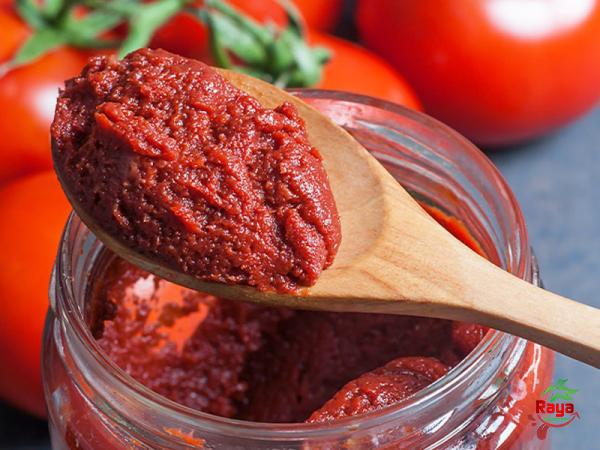 4. Added Sugar – Balancing Acidity and Taste: Some tomato paste products may include added sugar to balance the natural acidity of the tomatoes and give the paste a slightly sweeter flavor. The addition of sugar can also help to cut down on the bitterness that may be present in certain tomato varieties. However, it is important for individuals to be mindful of their sugar intake, particularly those who are managing conditions such as diabetes or closely monitoring their calorie intake. 5. Onion and Garlic – Enhancing Flavor and Aroma: To enhance the taste and complexity of tomato paste, some brands may incorporate onion and garlic powders or extracts into their recipes. These ingredients contribute to the umami flavor and aroma of the paste, adding depth and richness. However, individuals with specific allergies or sensitivities to onions or garlic should carefully read the label to ensure that the product does not contain these ingredients. 6. Herbs and Spices – Elevating Flavor Profiles: Herbs and spices are occasionally added to tomato paste formulations to elevate their flavor profiles. Common examples include oregano, basil, thyme, or parsley, which can provide a pleasant and aromatic taste experience. While herbs and spices are generally safe, it is important for individuals with allergies or sensitivities to carefully scrutinize the label for potential allergens and avoid products that may trigger adverse reactions. 7. Thickening Agents – Improving Texture and Consistency: Certain tomato paste products may contain thickening agents such as modified food starch or concentrated tomato fiber. These additives are used to improve the texture and consistency of the paste, making it easy to spread or incorporate into various recipes. While these ingredients are generally safe to consume, individuals with dietary restrictions or sensitivities to specific additives should review the label carefully to ensure that the product aligns with their needs. 8. Variations and Specialty Tomato Pastes – Meeting Diverse Dietary Preferences: In addition to the common ingredients listed above, there are specialty tomato paste products available to meet specific dietary preferences or restrictions. For instance, organic or gluten-free tomato paste options cater to those with particular dietary needs. These specialty products often use alternative ingredients or production methods to adhere to the specific requirements of certain consumer groups. Individuals with allergies or dietary restrictions should carefully read the label for potential allergens or prohibited additives to ensure their needs are met. 9. Allergen Statements – Importance of Allergy Awareness: Allergen statements on tomato paste labels are crucial for individuals with food allergies or sensitivities. These statements highlight the presence of common allergens such as nuts, soy, or dairy that may be present in the manufacturing facility or as ingredients in the tomato paste itself. Individuals with known allergies should carefully read these statements and seek out products that are free from allergens that may cause adverse reactions. 10. GMO and Organic Claims – Understanding Label Claims: Label claims related to genetically modified organisms (GMO) and organic certification can also influence consumer purchasing decisions. Some tomato paste products are labeled as non-GMO, indicating that they are made from tomatoes that have not been genetically modified. Likewise, organic tomato paste is made using tomatoes grown according to specific organic farming standards. Consumers seeking products aligned with their values should look for appropriate label claims. Conclusion: Understanding the tomato paste ingredients label is essential for making informed decisions about the products we consume. Whether it is considering the quality of the tomatoes, evaluating the inclusion of salt or sugar, or checking for potential allergens, being knowledgeable about the ingredients allows us to choose tomato paste that aligns with our dietary preferences and health requirements. By deciphering and interpreting the label, consumers can make more informed and confident choices when selecting tomato paste for their culinary endeavors.
4. Added Sugar – Balancing Acidity and Taste: Some tomato paste products may include added sugar to balance the natural acidity of the tomatoes and give the paste a slightly sweeter flavor. The addition of sugar can also help to cut down on the bitterness that may be present in certain tomato varieties. However, it is important for individuals to be mindful of their sugar intake, particularly those who are managing conditions such as diabetes or closely monitoring their calorie intake. 5. Onion and Garlic – Enhancing Flavor and Aroma: To enhance the taste and complexity of tomato paste, some brands may incorporate onion and garlic powders or extracts into their recipes. These ingredients contribute to the umami flavor and aroma of the paste, adding depth and richness. However, individuals with specific allergies or sensitivities to onions or garlic should carefully read the label to ensure that the product does not contain these ingredients. 6. Herbs and Spices – Elevating Flavor Profiles: Herbs and spices are occasionally added to tomato paste formulations to elevate their flavor profiles. Common examples include oregano, basil, thyme, or parsley, which can provide a pleasant and aromatic taste experience. While herbs and spices are generally safe, it is important for individuals with allergies or sensitivities to carefully scrutinize the label for potential allergens and avoid products that may trigger adverse reactions. 7. Thickening Agents – Improving Texture and Consistency: Certain tomato paste products may contain thickening agents such as modified food starch or concentrated tomato fiber. These additives are used to improve the texture and consistency of the paste, making it easy to spread or incorporate into various recipes. While these ingredients are generally safe to consume, individuals with dietary restrictions or sensitivities to specific additives should review the label carefully to ensure that the product aligns with their needs. 8. Variations and Specialty Tomato Pastes – Meeting Diverse Dietary Preferences: In addition to the common ingredients listed above, there are specialty tomato paste products available to meet specific dietary preferences or restrictions. For instance, organic or gluten-free tomato paste options cater to those with particular dietary needs. These specialty products often use alternative ingredients or production methods to adhere to the specific requirements of certain consumer groups. Individuals with allergies or dietary restrictions should carefully read the label for potential allergens or prohibited additives to ensure their needs are met. 9. Allergen Statements – Importance of Allergy Awareness: Allergen statements on tomato paste labels are crucial for individuals with food allergies or sensitivities. These statements highlight the presence of common allergens such as nuts, soy, or dairy that may be present in the manufacturing facility or as ingredients in the tomato paste itself. Individuals with known allergies should carefully read these statements and seek out products that are free from allergens that may cause adverse reactions. 10. GMO and Organic Claims – Understanding Label Claims: Label claims related to genetically modified organisms (GMO) and organic certification can also influence consumer purchasing decisions. Some tomato paste products are labeled as non-GMO, indicating that they are made from tomatoes that have not been genetically modified. Likewise, organic tomato paste is made using tomatoes grown according to specific organic farming standards. Consumers seeking products aligned with their values should look for appropriate label claims. Conclusion: Understanding the tomato paste ingredients label is essential for making informed decisions about the products we consume. Whether it is considering the quality of the tomatoes, evaluating the inclusion of salt or sugar, or checking for potential allergens, being knowledgeable about the ingredients allows us to choose tomato paste that aligns with our dietary preferences and health requirements. By deciphering and interpreting the label, consumers can make more informed and confident choices when selecting tomato paste for their culinary endeavors.



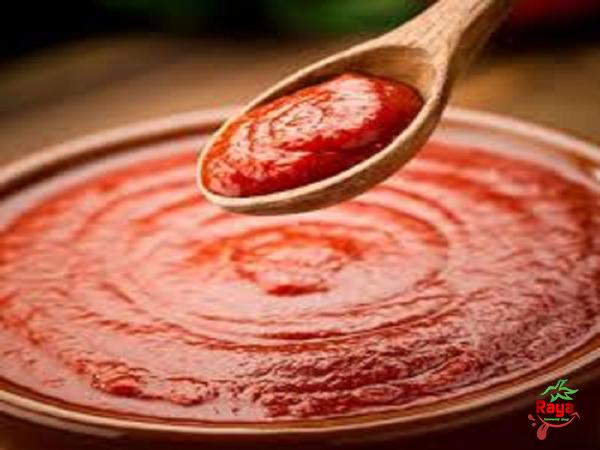

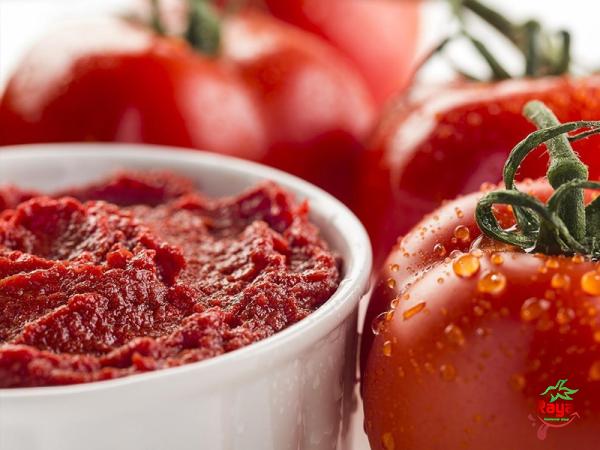



Your comment submitted.